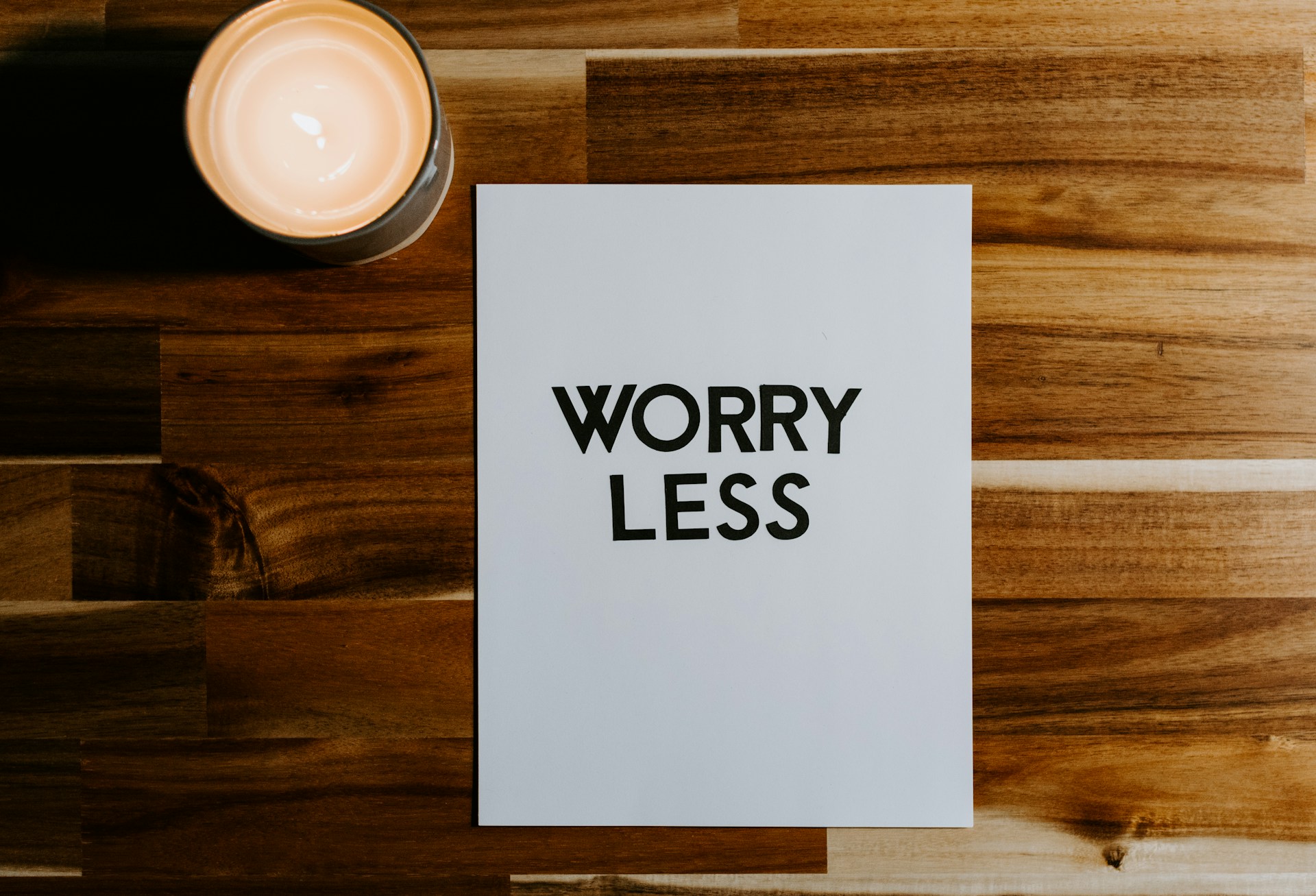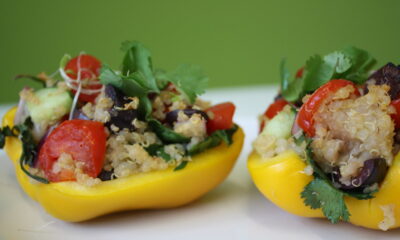Nutrition
Top 7 Antioxidant-Rich Foods for a Healthy Mind and Body
As we age, it’s crucial to keep our bodies in optimal condition, and one way to achieve this is by incorporating antioxidant-rich foods into our diets. Antioxidants are substances that protect our cells from damage caused by free radicals, which are unstable molecules harmful to our bodies. Consuming a diet rich in antioxidants can help maintain our overall health and potentially slow down the aging process. Let’s explore some of the best antioxidant-packed foods that can help us age gracefully and keep our minds and bodies sharp.
1. Berries
Berries, nature’s candy, pack a powerful punch when it comes to antioxidants. Blueberries, strawberries, blackberries, and raspberries are all excellent sources of antioxidants, particularly vitamin C and flavonoids, which can help protect our cells from damage. They’re delicious and versatile, making them an easy addition to our daily diets.
2. Leafy Greens
Leafy greens like spinach, kale, and collard greens are not only low in calories but also high in antioxidants. These nutrient-dense powerhouses contain vitamins A, C, and K, as well as minerals like calcium and iron. They’re also rich in lutein and zeaxanthin, antioxidants that can help protect our eyes from age-related diseases. So, go ahead and toss some greens into your salad or smoothie for an extra boost of nutrients.
3. Nuts and Seeds
Nuts and seeds are fantastic sources of antioxidants, healthy fats, and protein. Almonds, walnuts, and pecans are particularly high in vitamin E, an antioxidant that can help protect our cells from damage. Chia seeds, flaxseeds, and sunflower seeds are also excellent sources of antioxidants. Sprinkle them on your yogurt, oatmeal, or salad for a crunchy and nutritious addition.
4. Dark Chocolate
Yes, you read that right! Dark chocolate is not only a delicious treat but also a great source of antioxidants. It’s rich in flavonoids, which can help improve blood flow and lower blood pressure. Just remember to choose dark chocolate with at least 70% cocoa content to reap the most benefits, and enjoy it in moderation.
5. Green Tea
Green tea is a soothing and refreshing beverage that’s been consumed for centuries for its numerous health benefits. It’s rich in antioxidants called catechins, which can help protect our cells from damage and reduce inflammation. So, swap out your afternoon coffee for a cup of green tea, and your body will thank you.
6. Beans and Legumes
Beans and legumes, such as lentils, chickpeas, and black beans, are not only excellent sources of protein and fiber but also rich in antioxidants. They contain a variety of phytochemicals, which can help protect our cells from damage and reduce inflammation. Try incorporating more beans and legumes into your diet by adding them to soups, salads, or even making a delicious bean dip.
7. Whole Grains
Whole grains like brown rice, quinoa, and whole wheat bread are not only filling and satisfying but also rich in antioxidants. They contain a variety of nutrients, including vitamins, minerals, and phytochemicals, which can help protect our cells from damage. So, swap out your white bread and pasta for whole grain options, and your body will reap the benefits.
Incorporating these antioxidant-rich foods into our daily diets can help us maintain our overall health and potentially slow down the aging process. Remember, variety is the spice of life, so mix and match these foods to keep your meals interesting and flavorful. Here’s to aging gracefully and enjoying a long, healthy life!

Nutrition
This Fruit Tops the Charts: CDC Highlights Their Health Benefits

You might not think of adding tomatoes to your morning smoothie or yogurt parfait, but incorporating them into your lunch and dinner could be one of the best health decisions you make. The Centers for Disease Control and Prevention (CDC) recently named tomatoes the healthiest fruit in the world.
Yes, you read that right—fruit. By definition, a fruit is anything with seeds, and tomatoes fit the bill. The CDC released a list of “powerhouse” fruits and vegetables, defined as those “most strongly associated with reduced chronic disease risk.”
Interestingly, the first 26 items on this list are vegetables, primarily cruciferous or leafy greens. The first fruit to make an appearance? Tomatoes, with an impressive nutrient density score of 20.37.
The nutrient density score is a measure of the bioavailability of 17 key nutrients. For reference, the Cleveland Clinic provides a breakdown of what a medium-sized raw tomato offers:
A medium-sized raw tomato contains 17 grams of vitamin C, which accounts for 19% of the daily value (DV) recommended for adults.
In comparison, the top-ranking produce on the CDC’s “powerhouse” list is watercress, boasting a nutrient density score of 100. Following tomatoes with their score of 20.37 are several other fruits, but none come close to the nutrient-packed punch that tomatoes deliver.
Incorporating tomatoes into your meals can be a simple yet effective way to boost your nutrient intake. Whether in salads, sauces, or even as a snack, tomatoes offer a versatile and delicious option for enhancing your diet.
So next time you’re planning your meals, remember to include this powerhouse fruit. Your body will thank you for it.
Let us know what you think, please share your thoughts in the comments below.
Nutrition
Are You Eating Too Much Fiber? Doctors Reveal 5 Warning Signs

Incorporating fiber-rich foods into your diet is essential for maintaining good health. Fiber supports gastrointestinal health, regulates blood sugar levels, and lowers the risk of cardiovascular diseases. However, it’s possible to consume too much fiber, leading to several unwanted side effects. Here are five signs that you might be overdoing it with fiber, according to doctors.
Bloating and Gas
Bloating and gas are among the most common issues associated with excessive fiber intake.
“As fiber is fermented by the gut microbiota, it releases gas and other compounds, which can be bothersome,” explains Jennie Stanford, MD, an obesity medicine physician.
Different types of fiber may affect people differently. Generally, soluble fiber (found in oats) is better tolerated than insoluble fiber (found in vegetables).
Abdominal Pain and Cramping
Too much fiber can lead to abdominal pain and cramping. This happens because the digestive system struggles to process large amounts of fiber.
“While fiber is typically recommended for regular bowel movements, excessive consumption may have the opposite effect, causing constipation or diarrhea,” says Melissa Snover, RD, a registered nutritionist.
Diarrhea or Constipation
Another gastrointestinal symptom to be aware of is either diarrhea or constipation.
“Diarrhea may occur with a high fiber intake, usually as a result of drawing more water into the stool and it moving through the intestines more quickly. In other people, constipation may occur as a result of the bulk that fiber adds to stool,” Stanford explains.
Nutritional Deficiencies
Eating too much fiber can interfere with your body’s ability to absorb essential nutrients, leading to deficiencies.
“Fiber can bind to essential nutrients like calcium, iron, and zinc, preventing them from being absorbed by your body,” Snover says.
This issue can also contribute to dehydration, making adequate hydration even more critical.
Dehydration
Fiber absorbs water, which means that a high-fiber diet requires you to drink more fluids. Without proper hydration, you may experience dehydration.
“This ensures you get all the benefits of fiber without the downsides that can be caused by excessive consumption,” Snover advises.
Pay attention to these signs to ensure you’re not overloading on fiber. While fiber is vital for good health, balance is key to avoiding these uncomfortable and potentially harmful side effects.
Let us know what you think, please share your thoughts in the comments below.
Nutrition
Doctors Recommend These 9 Supplements to Help Ease Anxiety

Anxiety can be a challenging condition to manage, and while traditional treatments like medication and therapy are commonly recommended, many people are exploring supplements as a complementary option. It’s essential to consult with your healthcare provider before starting any new supplement regimen. Here are nine supplements that doctors say may help soothe anxiety symptoms.
Vitamin D
A deficiency in vitamin D has been linked to increased symptoms of anxiety and depression. Dr. Indhira Ghyssaert emphasizes the importance of this vitamin for maintaining energy levels.
“Of course, the sun is the best source of vitamin D. However, we recommend adults take a supplement to make up for the loss during winter months or in colder, darker climates,” she tells Best Life.
Consider a dose of 2000 IU, but consult your doctor for personalized advice.
Magnesium
Magnesium plays a crucial role in brain health by modulating the brain’s stress response. According to the Cleveland Clinic, it helps lower cortisol levels and balance neurotransmitters responsible for the “fight or flight” response.
“Magnesium is essential for brain health,” says Ghyssaert.
She recommends starting with 100 milligrams before bedtime and gradually increasing to 250 milligrams.
GABA
Gamma-aminobutyric acid (GABA) is a neurotransmitter that helps inhibit excessive neuronal activity, promoting calmness and reducing anxiety.
“I recommend starting with a dosage of 250 milligrams daily and working up to 750 milligrams,” Ghyssaert advises.
However, GABA is not suitable for everyone, especially those with depression or on blood pressure-lowering medications.
Vitamin B12
Vitamin B12 is essential for brain health and neural protection. Janine Bowring, ND, highlights its importance.
“From a whole food source, it has been found that vitamin B12 helps with your neural protection for your myelin. Myelin is the coating on the outside of your nerves, and a deficiency has been linked to depression,” she explained in a recent TikTok post.
Valerian Root
Valerian root is often used to improve sleep quality and reduce anxiety.
“Valerian root increases GABA levels in the brain slowly and helps to reduce anxiety and improve sleep quality,” says Ghyssaert.
She recommends starting with 300 milligrams before bedtime and working up to 600 milligrams. Avoid if you are pregnant, breastfeeding, or have liver conditions.
Creatine
Commonly known for its muscle-building benefits, creatine can also help ease anxiety symptoms. Jenna Stangland, RD, explains its impact on brain health.
“There is a relationship between creatine metabolism in the brain and depression. When there are smaller amounts of white matter creatine and phosphocreatine in the brain, more severe depressive episodes occur,” she tells Best Life.
Daily creatine supplementation can enhance brain energy levels and positively impact mood, memory, cognition, and emotion.
Fish Oil
Rich in Omega-3 fatty acids, fish oil can be beneficial for reducing anxiety. A 2018 meta-analysis published in JAMA Network Open reviewed 19 studies and found that 2,000 milligrams of Omega-3 fatty acids per day significantly reduced anxiety symptoms.
Ashwagandha
Ashwagandha is an adaptogen that helps the body manage stress. It has been shown to reduce cortisol levels and improve symptoms of anxiety and depression. Start with a lower dose and consult your doctor for the best regimen.
Lavender
Lavender supplements, often in the form of capsules or essential oils, can have calming effects. Studies have shown that lavender can reduce anxiety levels and improve sleep quality. It’s generally safe but should be used under the guidance of a healthcare provider.
These nine supplements offer a range of options for those looking to manage anxiety naturally. Always consult with your healthcare provider to determine the best course of action for your specific needs.
Let us know what you think, please share your thoughts in the comments below.
-

 Health4 months ago
Health4 months ago17-Second Neuropathy Solution
-

 Health11 months ago
Health11 months agoPreventing Falls and Injuries for Seniors
-

 Nutrition8 months ago
Nutrition8 months agoThe Aging Secret of Vitamin D Unveiled
-

 Health3 months ago
Health3 months agoOncologist Reveals Top 5 Cancer Prevention Tips You Shouldn’t Ignore
-

 Nutrition12 months ago
Nutrition12 months ago5 AMAZING Dinner Recipes That Are Also HEALTHY
-

 Lifestyle4 months ago
Lifestyle4 months agoSleep Soundly with These 11 Expert-Approved Bedtime Routines
-

 Health9 months ago
Health9 months agoDownsizing Tips: Simplifying Your Lifestyle
-

 Lifestyle2 weeks ago
Lifestyle2 weeks agoMorning Habits That Could Add Years to Your Life
